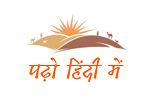What Is Economics.
Economics is a complex and multifaceted field that studies how societies allocate scarce resources to satisfy unlimited human wants and needs. It encompasses a wide range of topics, theories, and methodologies that provide insights into how individuals, businesses, and governments make decisions regarding production, consumption, and distribution of goods and services.
This comprehensive explanation of economics will cover its key concepts, principles, branches, and applications, as well as its historical development and contributions to our understanding of human behavior and societal interactions. Let’s dive into the world of economics:
Introduction to Economics
Economics is the social science that examines the behavior of individuals, firms, and governments in response to limited resources and unlimited wants. Its central concern is the efficient allocation of resources to maximize societal welfare. At the core of economic analysis lies the concept of scarcity, which means that resources are limited relative to human desires. This scarcity necessitates choices, trade-offs, and opportunity costs.
Fundamental Concepts
- Scarcity and Choice: Scarcity exists when the demand for a resource exceeds its supply. In response to scarcity, individuals, firms, and governments must make choices and allocate resources optimally.
- Opportunity Cost: The opportunity cost of a decision is the value of the next-best alternative foregone. Whenever resources are employed in one activity, they are no longer available for other alternatives.
- Supply and Demand: The foundation of market economies lies in the forces of supply and demand. Supply represents the quantity of a good or service producers are willing to offer at different prices, while demand reflects consumers’ willingness to buy at various price levels.
- Market Equilibrium: Equilibrium occurs when the quantity demanded equals the quantity supplied. At this point, there is no inherent tendency for prices to rise or fall.
Economic Systems
Economic systems define how societies organize production, consumption, and distribution. There are mainly four types of economic systems:
- Market Economy: In a market economy, decisions about resource allocation are primarily determined by the interaction of supply and demand in free markets. Individual choices guide the economy’s production and consumption.
- Command Economy: In a command economy, the government controls most aspects of resource allocation and economic activities. Decisions are centralized and planned by a central authority.
- Mixed Economy: Most modern economies are mixed economies, combining elements of both market and command systems. Governments intervene to correct market failures and ensure social welfare.
- Traditional Economy: Traditional economies rely on customs, traditions, and historical practices to determine resource allocation. These systems are prevalent in some remote or tribal communities.
Microeconomics
Microeconomics examines the economic behavior of individual agents, such as households, firms, and industries. It focuses on the interaction of supply and demand in specific markets, as well as the decision-making processes of consumers and producers.
- Consumer Behavior: Microeconomics explores how consumers make choices based on preferences and budget constraints, aiming to maximize utility.
- Producer Behavior: It also delves into the decisions of firms regarding production techniques, cost-minimization, and profit maximization.
- Market Structures: Microeconomics analyzes different market structures, including perfect competition, monopolistic competition, oligopoly, and monopoly. Each structure has unique characteristics that affect price, output, and market behavior.
- Market Failures: Market failures occur when the free market does not allocate resources efficiently. Common examples include externalities, public goods, and information asymmetry.
Macroeconomics
Macroeconomics studies the economy as a whole, focusing on aggregate variables like national income, unemployment, inflation, and economic growth. It aims to understand and influence factors that determine the overall performance of an economy.
- Gross Domestic Product (GDP): GDP measures the total value of goods and services produced in a country over a specific period. It serves as an indicator of economic output and growth.
- Unemployment: Macroeconomics examines the causes and consequences of unemployment, which has significant social and economic implications.
- Inflation: Inflation refers to the sustained increase in the general price level of goods and services. It affects purchasing power and the overall stability of the economy.
- Monetary and Fiscal Policy: Macroeconomists study the impact of monetary policy (controlled by central banks) and fiscal policy (controlled by governments) on economic stability and growth.
International Economics
International economics deals with the economic interactions between countries and the global economy. It includes international trade, finance, and monetary systems.
- International Trade: The study of international trade analyzes the exchange of goods and services between nations, the benefits of specialization, and the impacts of trade barriers.
- Balance of Payments: The balance of payments accounts for a country’s international transactions, including trade balance, foreign direct investment, and capital flows.
- Exchange Rates: International economists examine the determinants and effects of exchange rates, which influence trade competitiveness and capital flows.
Development Economics
Development economics focuses on the economic growth and development of low-income countries. It seeks to identify policies that can improve living standards and reduce poverty.
Behavioral Economics
Behavioral economics integrates insights from psychology into traditional economic theory to understand how individuals make decisions. It recognizes that people may not always act rationally, as assumed in classical economics.
Applied Economics
Applied economics involves the application of economic principles and techniques to address real-world problems. Examples include environmental economics, health economics, and labor economics.
History of Economics
The study of economics has evolved significantly over time, from the classical economists like Adam Smith and David Ricardo to the Keynesian revolution and the development of modern economic theories.
Conclusion
In conclusion, economics provides a framework to comprehend the complexities of human decision-making and societal interactions under conditions of scarcity. The field’s interdisciplinary nature allows it to inform policy-making, address global challenges, and contribute to the betterment of societies worldwide. Economics continues to evolve, adapting to new realities and innovations, and remains an indispensable tool in shaping the world’s economic future.





Pingback: How Discovery Channel Make Money - Padho Hindi Me
Pingback: Biography Of Bata Shoes Company - Padho Hindi Me